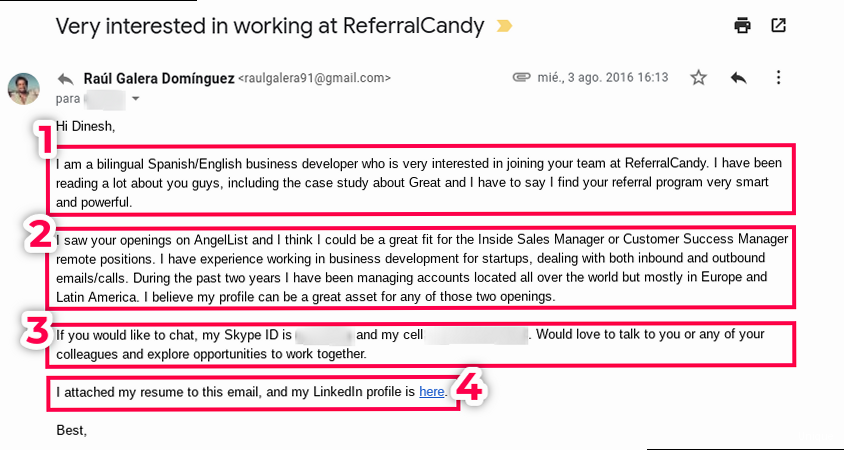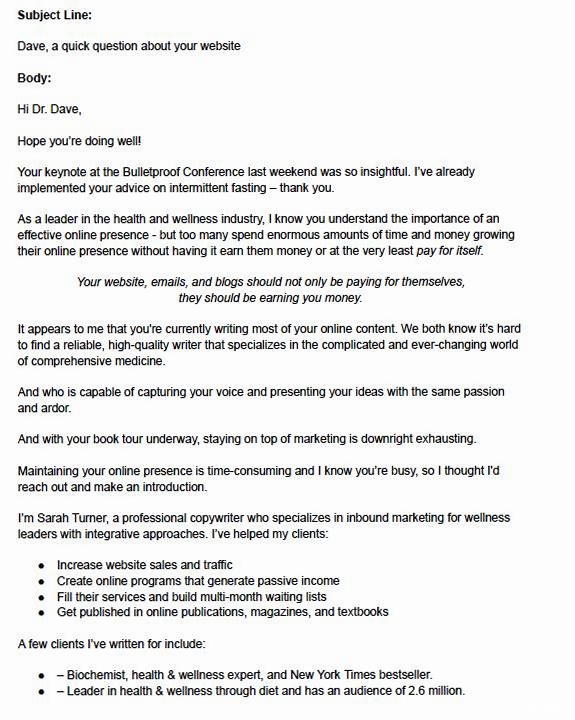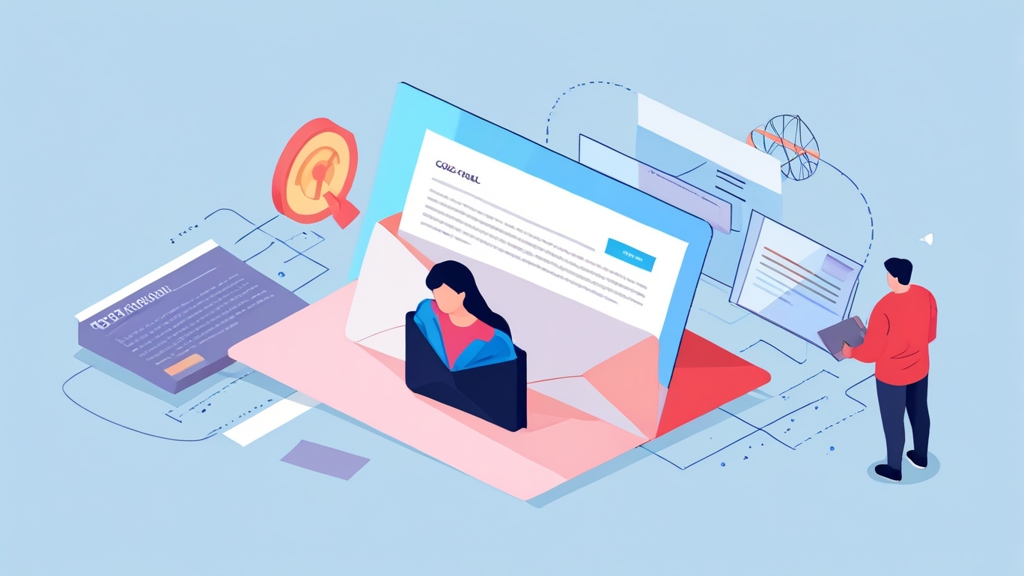Copywriting Cold Email Examples That Convert
Crafting the perfect cold email is an art. It’s about grabbing attention, piquing interest, and ultimately, driving action. This article will delve into specific examples of copywriting techniques used in cold emails that have proven to be effective, focusing on personalization, value proposition, and call-to-action strategies. You’ll learn how to write cold emails that not only get opened but also generate replies and convert leads.
The Power of Personalization: Tailoring Your Message

Example 1: Referencing Recent Achievements
One powerful way to personalize your email is to acknowledge a recent achievement or milestone of the recipient or their company. This shows that you’re paying attention and are genuinely interested in their success.Subject: Congratulations on the Q3 Growth, [Recipient Name]!
Hi [Recipient Name],
I was really impressed to see [Company Name]'s recent growth in Q3, especially in the [Specific Area] sector. Your team's work on [Specific Project/Initiative] seems to be paying off.
At [Your Company Name], we've helped companies like [Similar Company] achieve similar results by [Briefly explain your solution - one sentence].
Would you be open to a quick 15-minute chat next week to discuss how we can help [Company Name] further accelerate your growth?
Best regards,
[Your Name]
Example 2: Mentioning Shared Connections or Interests
Leveraging shared connections or interests can build rapport and establish a sense of familiarity. Tools like LinkedIn Sales Navigator can help you identify mutual connections or shared groups.Subject: Connection Request: [Recipient Name] (Shared Connection: [Mutual Connection Name])
Hi [Recipient Name],
I noticed we're both connected to [Mutual Connection Name] on LinkedIn. I've been following [Mutual Connection Name]'s work at [Mutual Connection's Company] for a while and admire [Specific Aspect of Their Work].
I also saw that you're interested in [Shared Interest - e.g., AI in Marketing]. At [Your Company Name], we're helping businesses leverage AI to [Specific Benefit related to the shared interest].
I'd love to connect and learn more about your experience with [Shared Interest]. Would you be available for a brief call sometime next week?
Thanks,
[Your Name]
Example 3: Addressing a Specific Pain Point
Identifying and addressing a specific pain point that the recipient’s company is likely facing can demonstrate your value proposition and show that you understand their challenges. You can often find these pain points by researching their industry, reading their blog posts, or analyzing their website.Subject: Streamlining Your [Specific Process] at [Company Name]
Hi [Recipient Name],
I've been following [Company Name]'s work in [Industry] and noticed that many companies in your space are struggling with [Specific Pain Point - e.g., inefficient lead qualification].
We've helped companies like [Similar Company] reduce their lead qualification time by 40% using our [Your Solution].
Would you be interested in seeing a brief demo of how our solution can help [Company Name] streamline your [Specific Process] and improve your overall efficiency?
Thanks,
[Your Name]
Crafting a Compelling Value Proposition

Example 1: Focusing on Tangible Benefits
Instead of using vague language, highlight the tangible benefits of your product or service. Quantify the results whenever possible to make your value proposition more persuasive.Subject: Increase Your Website Traffic by 30% in 90 Days
Hi [Recipient Name],
We've helped companies like [Similar Company] increase their website traffic by an average of 30% within 90 days using our [Specific Strategy - e.g., SEO-optimized content marketing].
Our approach focuses on [Key Features of Your Approach] which results in [Specific Benefits - e.g., higher search engine rankings, more qualified leads, and increased brand visibility].
Would you be interested in a free website audit to identify opportunities for improvement?
Thanks,
[Your Name]
Example 2: Addressing a Specific Industry Need
Tailor your value proposition to address the specific needs and challenges of the recipient’s industry. This demonstrates that you understand their unique context and can provide relevant solutions.Subject: Solving the [Industry-Specific Problem] for [Company Name]
Hi [Recipient Name],
I understand that [Industry - e.g., SaaS] companies like [Company Name] are facing the challenge of [Specific Problem - e.g., high customer churn].
We've developed a [Your Solution - e.g., customer success platform] that helps companies reduce churn by [Quantifiable Result - e.g., 20%] by [Key Features - e.g., proactively identifying at-risk customers and providing personalized support].
Would you be open to a quick call to discuss how we can help [Company Name] improve customer retention?
Thanks,
[Your Name]
Example 3: Highlighting Competitive Advantages
Differentiate yourself from the competition by highlighting your unique competitive advantages. Explain what makes your product or service superior and why the recipient should choose you over other options.Subject: [Your Company Name] vs. [Competitor Name] - A Better Solution for [Specific Need]
Hi [Recipient Name],
I understand that you're currently using [Competitor Name] for [Specific Need].
While [Competitor Name] offers [Competitor's Feature], our solution provides [Your Unique Feature] which results in [Benefit - e.g., increased efficiency, cost savings, or better performance].
We're confident that [Your Company Name] can provide a better solution for [Specific Need] at [Company Name].
Would you be interested in a side-by-side comparison to see how we stack up?
Thanks,
[Your Name]
Crafting Effective Calls to Action (CTAs)
Your call to action (CTA) is the most crucial part of your cold email. It tells the recipient what you want them to do next. A clear, concise, and compelling CTA can significantly increase your response rates. This section explores different types of CTAs and provides examples of how to craft them effectively.Example 1: The Direct Approach
A direct CTA clearly states what you want the recipient to do. This approach is straightforward and leaves no room for ambiguity.Subject: Let's Schedule a Quick Demo
Hi [Recipient Name],
[Briefly explain your value proposition - 2-3 sentences]
Are you available for a 15-minute demo sometime next week?
Thanks,
[Your Name]
Example 2: The Question-Based Approach
A question-based CTA engages the recipient and encourages them to think about their needs and challenges. This approach can be more subtle and less aggressive than a direct CTA.Subject: Improving Your [Specific Area] at [Company Name]
Hi [Recipient Name],
[Briefly explain your value proposition - 2-3 sentences]
Would you be interested in learning more about how we can help [Company Name] improve your [Specific Area]?
Thanks,
[Your Name]
Example 3: The Alternative Choice Approach
This CTA provides the recipient with two options, making it easier for them to respond. Even if they decline the first option, they may still be interested in the alternative.Subject: Discussing [Specific Topic] at [Company Name]
Hi [Recipient Name],
[Briefly explain your value proposition - 2-3 sentences]
Would you be available for a quick call next week to discuss [Specific Topic], or would you prefer that I send you some relevant resources?
Thanks,
[Your Name]
The Art of the Follow-Up: Persistence Pays Off
Following up is crucial in cold email marketing. Most people won’t respond to your initial email, so sending follow-up emails can significantly increase your chances of getting a reply. This section explores effective follow-up strategies and provides examples of how to craft compelling follow-up emails that get results.Example 1: The “Bumping” Email
A simple “bumping” email reminds the recipient of your previous message without adding any new content.Subject: Following Up: [Original Subject Line]
Hi [Recipient Name],
Just bumping this to the top of your inbox.
Let me know if you have any questions.
Thanks,
[Your Name]
Example 2: The Value-Added Follow-Up
This follow-up email provides additional value to the recipient, such as a relevant article, case study, or free resource.Subject: Following Up: [Original Subject Line] + A Helpful Resource
Hi [Recipient Name],
Following up on my previous email regarding [Specific Topic].
I thought you might find this article helpful: [Link to Relevant Article]
It discusses [Key Takeaways from the Article] which are relevant to [Company Name]'s challenges.
Let me know if you have any questions.
Thanks,
[Your Name]
Example 3: The “Break-Up” Email
This email is your final attempt to reach the recipient. It acknowledges that they may not be interested and offers to remove them from your mailing list.Subject: Final Follow-Up: [Original Subject Line]
Hi [Recipient Name],
I understand that you're busy, and I haven't heard back from you.
I'm going to assume that [Specific Topic] isn't a priority for [Company Name] right now.
I won't bother you further, but feel free to reach out if your needs change.
Best regards,
[Your Name]
- Follow-Up Schedule:
Initial Email: Day 0
Follow-Up 1 (Bumping Email): Day 3-5
Follow-Up 2 (Value-Added): Day 5-7 after Initial
Follow-Up 3 (Break-Up): Day 7-10 after Follow-Up 2
